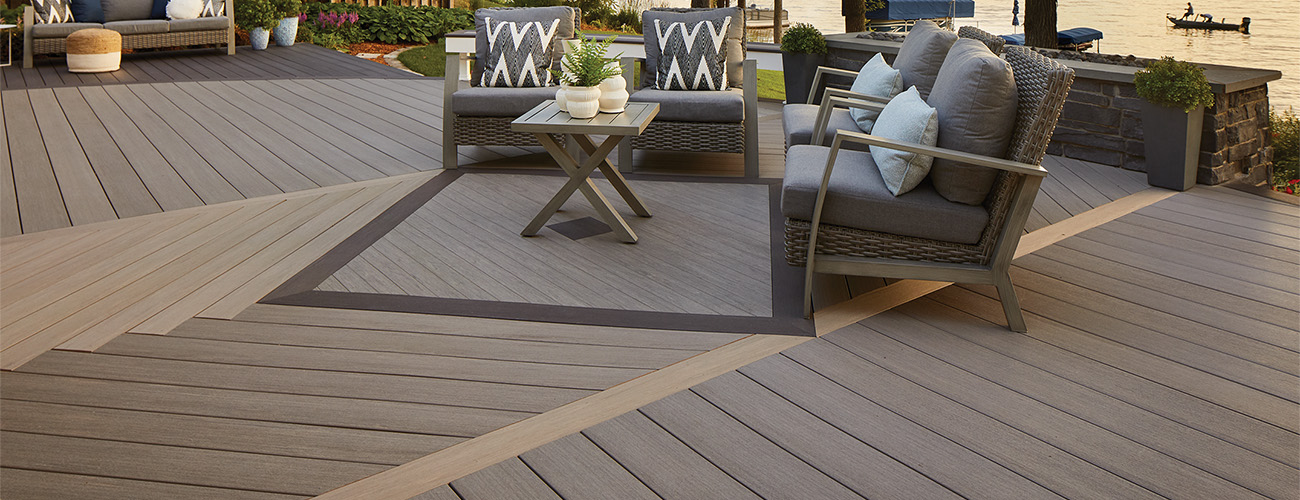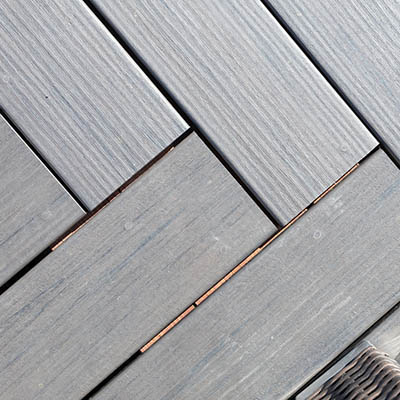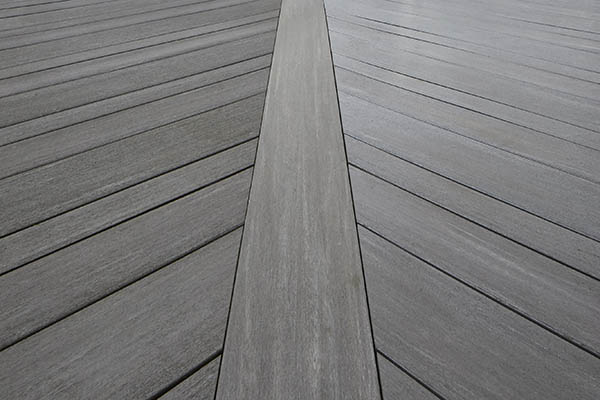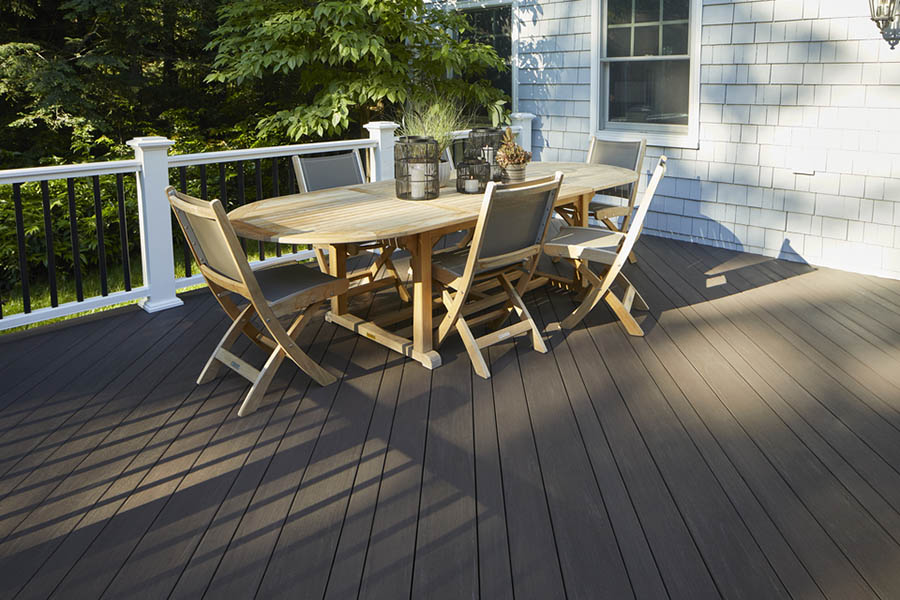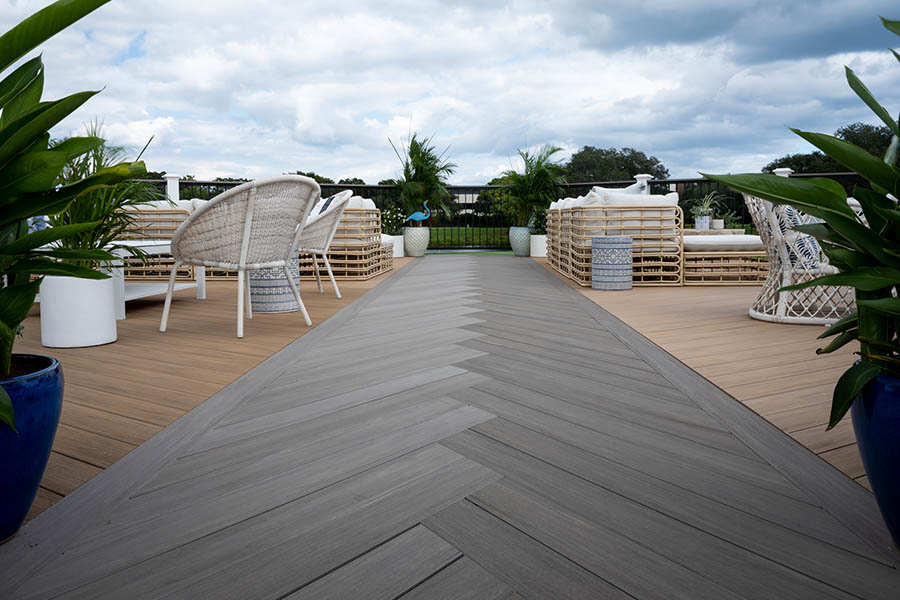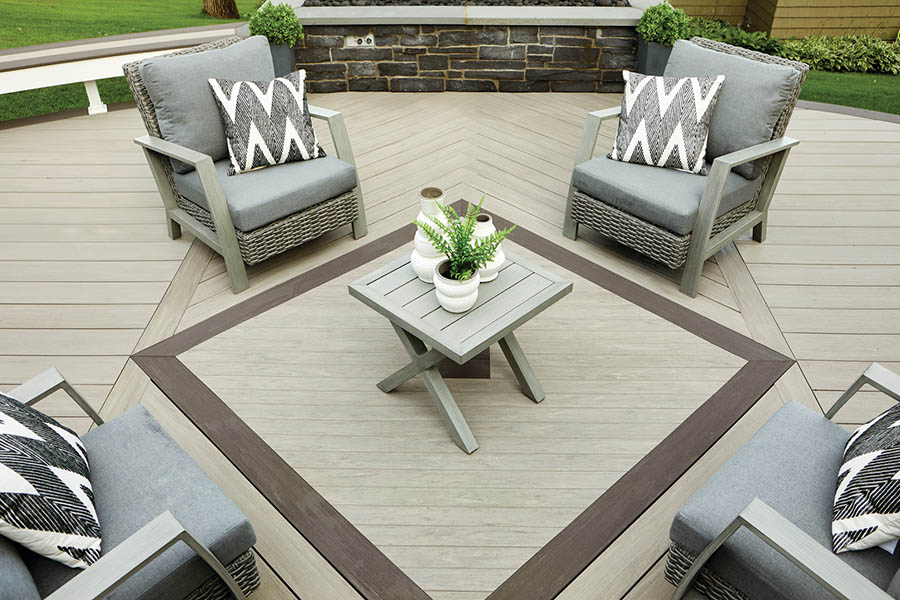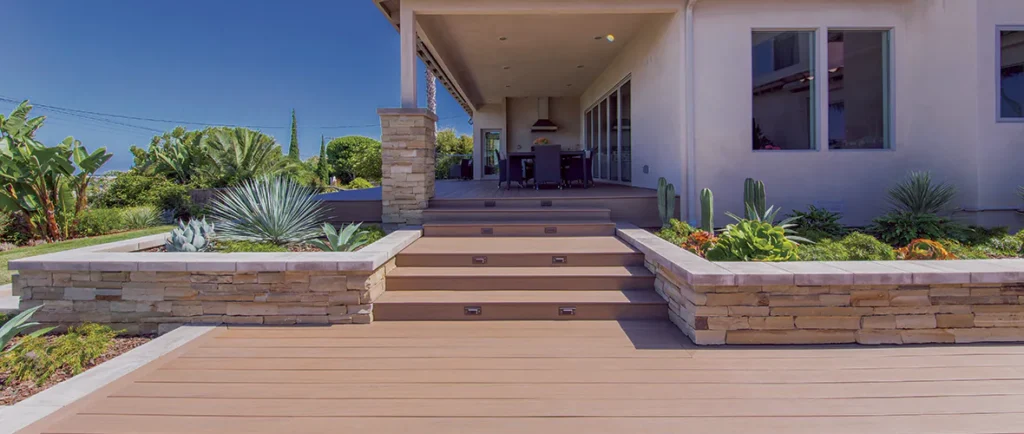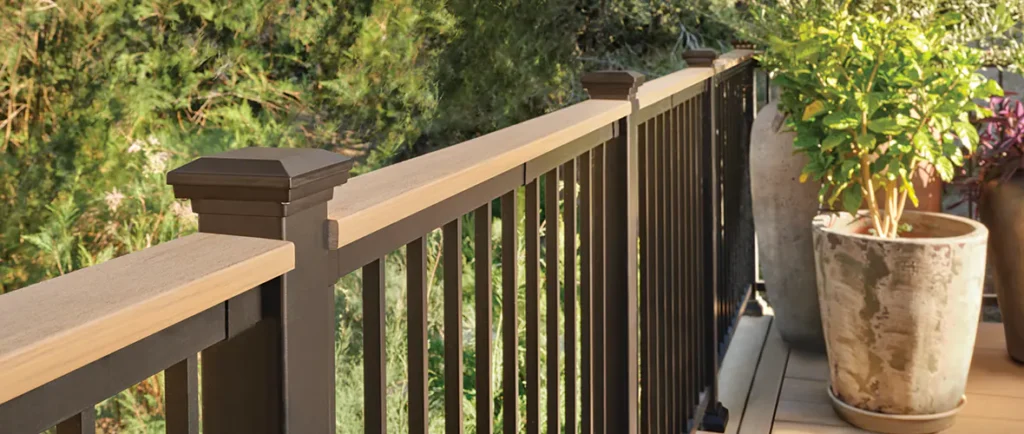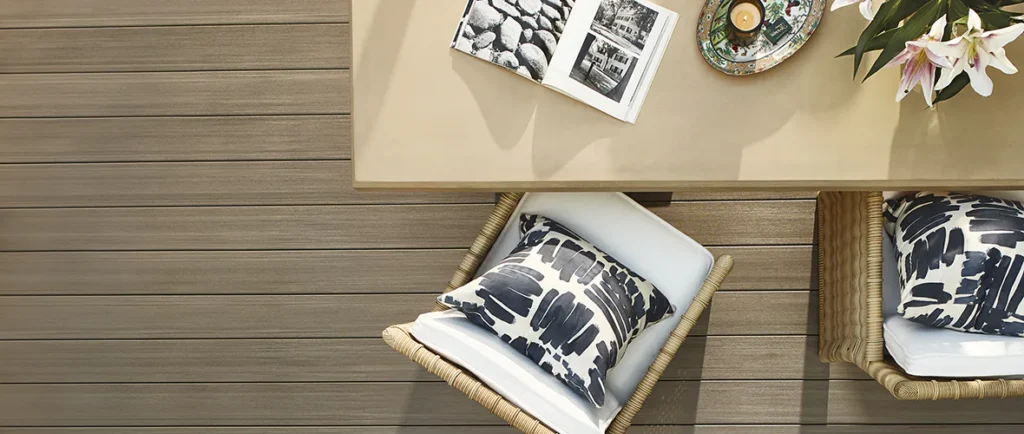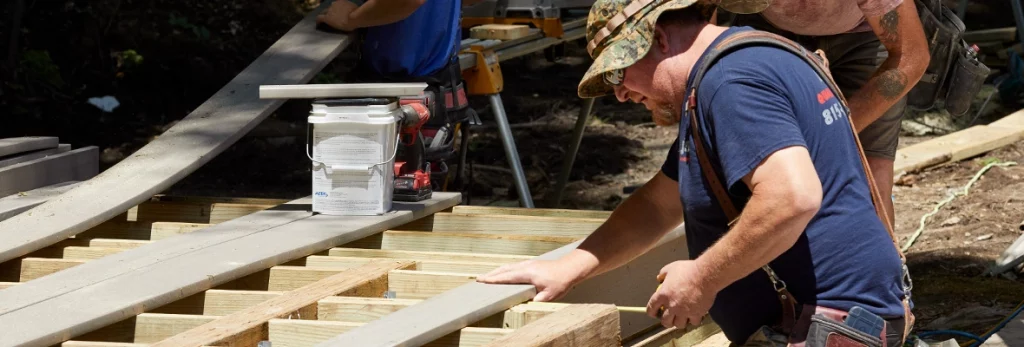The herringbone deck pattern is an elaborate, fun design that brings a dynamic look to your deck surface. Created by repeatedly laying two deck boards at a 45-degree angle, a herringbone arrangement can be designed with different deck board widths or colors to create an inspiring deck pattern. Due to the intricacy of the design, herringbone pairs best with larger decks that have the space for the pattern to repeat.
How a Herringbone Deck Upgrades Your Outdoor Space
A herringbone deck features a tight, textured pattern that exudes sophistication. This unique design can elevate your deck layout in several ways to create an outdoor escape that’s perfect for relaxing afternoons with friends and family.
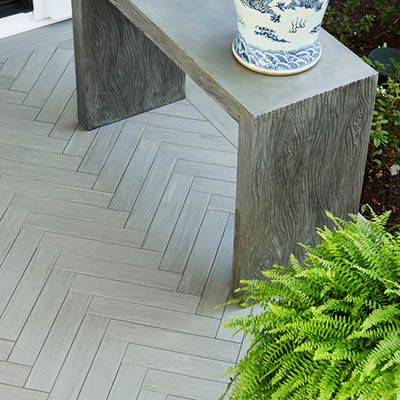
Makes A Small Space Seem Bigger
The herringbone pattern offers a lot of visual movement and can help make smaller spaces seem bigger.
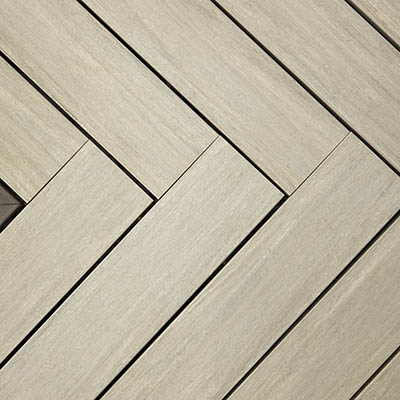
Keeps Your Space Design-Forward
The tight, woven texture of a herringbone deck brings dimensionality and a designer deck flooring trend to your outdoor space.
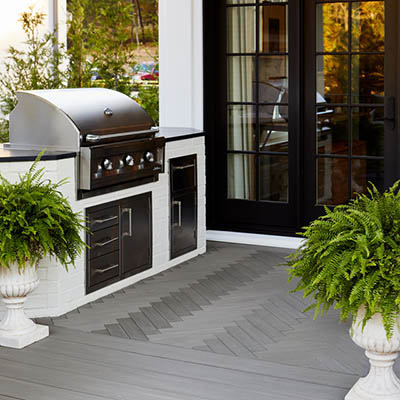
Helps Designate Deck Space
The unique pattern of a herringbone design draws the eye and demarcates difference, letting you designate space for cooking, relaxation, or play.
Herringbone vs Chevron Deck Patterns
While the herringbone and chevron deck patterns seem similar, they will create different effects for your overall deck design. Choosing the pattern that’s right for your outdoor space will depend on the kind of visual movement you want for your deck and the style you prefer.
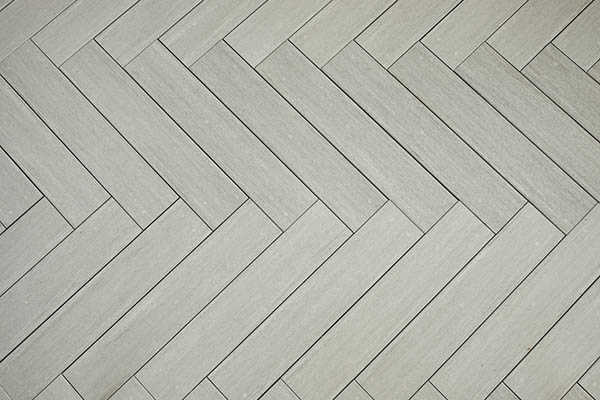
Herringbone Deck Design
A herringbone pattern looks like a broken zigzag, with each plank laid out at a 45-degree angle.
Herringbone Deck Ideas
There are a number of herringbone deck ideas that allow this visually appealing pattern to be further customized with different deck board widths, colors, or additional in-laid patterns.
Building a Herringbone Deck
Due to the intricacy of its pattern, a herringbone deck will need additional substructure support with appropriate joist spacing and blocking at the time of installation. This will prevent the deck boards in the herringbone pattern from feeling weak or springy underfoot.
The Importance of Joists
Because of the angle of the deck boards, a herringbone pattern will require a combination of single and double joists (two joists installed side-by-side) to provide support where the ends of the boards meet. The specific substructure construction regarding joist spacing and blocking will depend on:
- Whether you use narrow- (3.5”), standard- (5.5”), or wide- (7.25″) width boards for the pattern.
- The pattern’s size, whether it’s a smaller inlay, or spans the entire deck.
During substructure construction, it’s important to ensure that all deck board ends are fastened to a joist for proper support. However, we recommend spacing the joists at 12 inches or fewer on center for any deck board running diagonally to ensure the ends of the boards are supported properly after installation.
WORK WITH A CONTRACTOR FOR EASY INSTALLATION
Due to the complexity of this pattern, we recommend working with a TimberTech-registered contractor who can ensure your deck’s substructure and design are laid out properly.
Bring the Beauty of a Herringbone Pattern to Your Yard

Now that you’re more familiar with herringbone deck ideas, you’re ready to design an outdoor space that is not only stylish but also meets your family’s needs. Work with one of our registered contractors to create a build that transforms your deck into an outdoor oasis.
